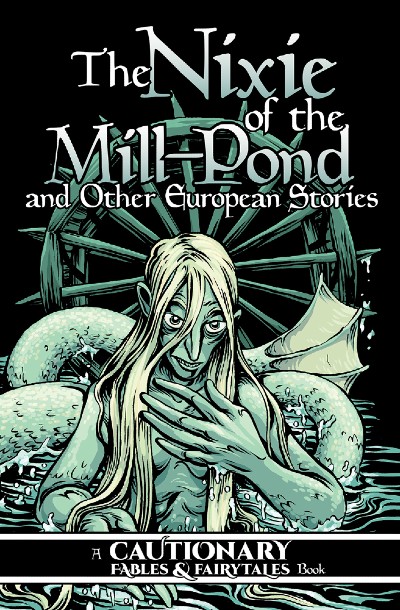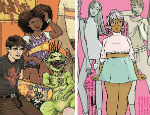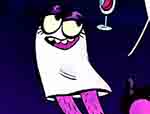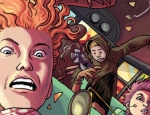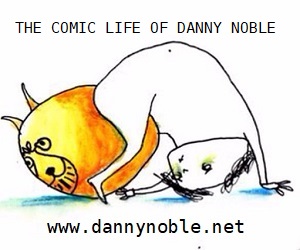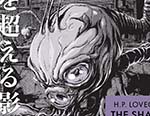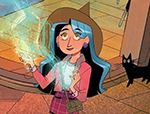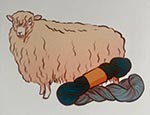In The Nixie of the Mill-Pond and Other European Stories a range of Iron Circus artists tackle classic folk tales in fresh and freaky ways, appropriate for children, if they’re cool with the creepiness, uncertainty and violence that all good fairytales have.
This is the third volume of Iron Circus Comics‘ series Cautionary Fables and Fairytales retelling folk tales from different continents, each story penned by a different artist or writer and artist pairing. The first editions covered Asia and Africa and this one spans Europe, including Russia. All present stories you’re likely to know well – in this case including classics like ‘Rapunzel’ and ‘Jack and the Beanstalk’ – and stories you might not know.
From the cutesy to the creepy, the approaches here are genuinely diverse and each story has a different take on the genre. Edited by Kel McDonald (Sorcery 101, Misfits of Avalon, The City Between) and Kate Ashwin (Widdershins, The Phoenix) in the grand old tradition of taking traditional stories and tweaking them to better entertain your audience, The Nixie of the Mill-Pond and Other European Stories brings new life to some very old tales. Such stories do not have true forms so I’m okay with any liberties taken with endings that may be happier, less happy, or more concerned with justice for werewolves than more well-known versions. But I confess my favourites are the uncomfortable endings.
Iron Circus has called on members of its astonishing talent pool and beyond here, some web cartoonists more often seen under a NSFW umbrella try their hand at a genre deemed safe for work and for children. Fairytales, as we know, can be pretty gruesome things. While being wholeheartedly aimed at “middle grade” readers – read 10-12-year-olds – there is certainly no less grimness here than the Brothers Grimm would provide. Perhaps a little more. Plenty of violence, dark magic and tragedy while no actual gore. Most of the stories also have a comedic edge and several include wry asides and modern American-style affectations. I’m going to say something briefly about each story, so yes I will be using my terrible thesaurus to find other words for ‘story’.
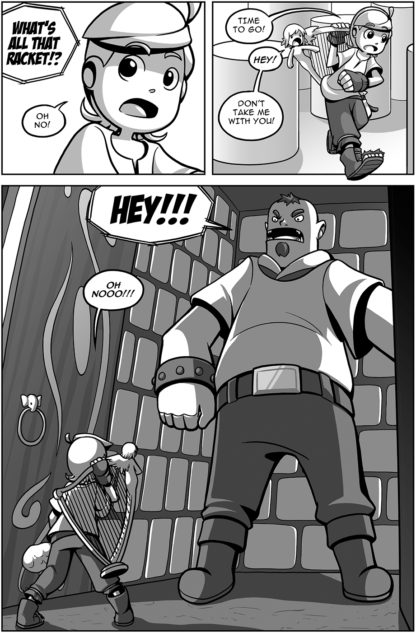
Mary Cagle’s accomplished take on ‘Jack and the Beanstalk’ (above) is cute, contemporary and funny with special mention to the back-talking of the magical harp, an often neglected character in the tale.
K.C. Green’s ‘The Singing Bone’ (below) has a subversive cartoon feel (which is to be expected from the creator of the ‘this is fine’ meme) and is the first of several stories in the book to offer a satirical critique of the “king’s daughter’s hand in marriage” fairytale trope grossness.
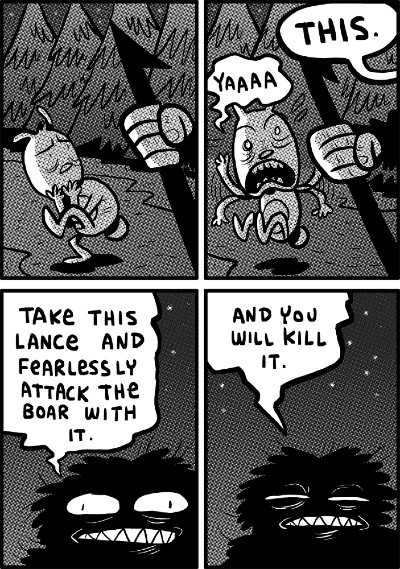
Kate Ashwin’s ‘Puss in Boots’ also addresses this theme, but in a somewhat nicer way. I really like the subtlety of her inked textures also.
Norwegian fable ‘Tatterhood’ (below) is next, taken on by Katie and Shaggy Shanahan and is delightfully frank and surreal, with just some really excellent cartoon violence, head swapping and comedic characterisation.
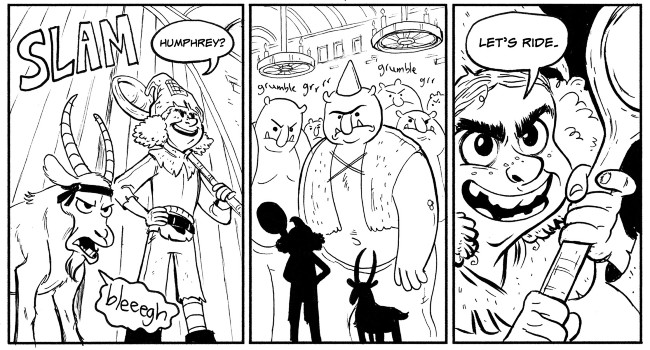
The retelling of ‘Rapunzel’ by Ovens (below), is fairly dark, definitely a harsher take than Disney’s Tangled anyway, and the artist’s rendering of the classic heroine’s hair is lovely, as is their take on stone tower walls.
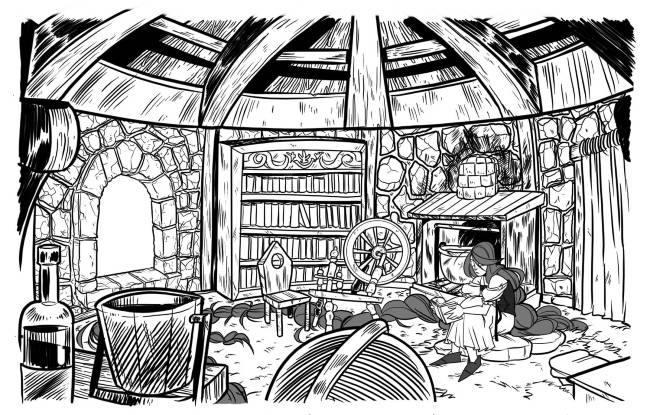
Carla Speed McNeil’s artwork on ‘Kid Brother’ is absolutely stunning; dark, and delicate and detailed, and the storytelling is enjoyably spare and poetic. I honestly can’t get over how beautiful this one is, like Chris Riddell meets P. Craig Russell. Also it has Baba Yaga in it. You can’t go wrong with a bit of Baba Yaga.
The story that lends its name to the collection ‘The Nixie of the Mill-Pond’ (below), here adapted by Kory Bing mixes lush character design and a very satisfying line with a playful, sing-song writing style that sits well with the pace and tone of the story. The lettering is not great in this one though, unfortunately.
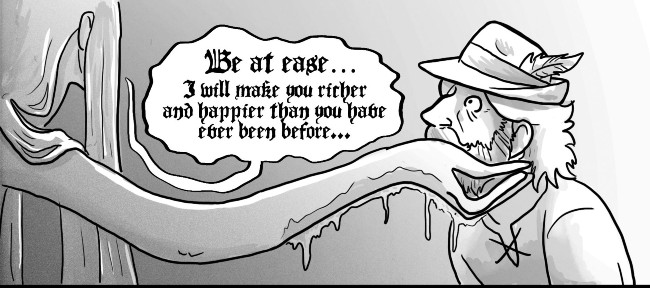
Kel McDonald takes on a traditional French story of lycanthropy, ‘Bisclavret’. I believe werewolves are a speciality of hers, also featuring in her popular web comic The City Between. The black and white format suits McDonald’s art very well and her page balance is beautiful, with just the right amount of negative space and detailing. The wolves in the story are rather cuddly looking, but this adds to the pleasure at the violent denouement which I won’t spoil for anyone who doesn’t know.
In the final story ‘Hamelin’s Piper’ (below) Jose Pimeinta’s rats are genuinely creepy. Told without words, this piece of narrative is wonderfully crafted and as disturbing as this story ought to be on the many levels appropriate. An excellent ending to the collection. In the ARC review version I saw the inked blacks were uneven and needed some levelling, hopefully this has been picked up and fixed in the final version.
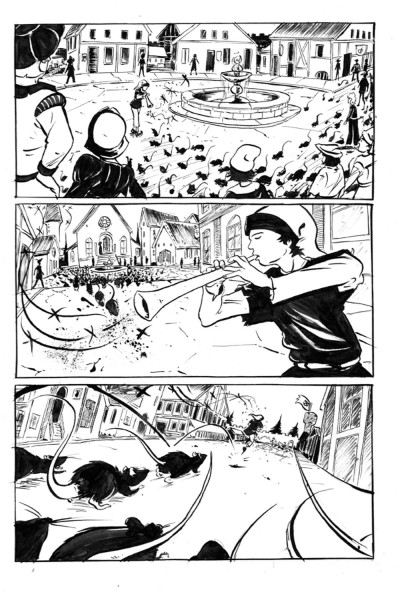
Of the three collections so far, these European tales may be under the most pressure to impress as perhaps the most familiar to a Western audience, and as an addition as such to a very crowded marketplace, The Nixie of the Mill-Pond and Other European Stories does not disappoint. I hope this series continues not only to those parts of the world they haven’t yet represented, but around and around the globe again, picking up more tales from each continent – there are many more stories worth a good retelling.
There does seem to be a strong belief in this book that milling flour is the dream job our generation has been denied. Poor? Alone? Ugly? Get thee a mill! Or a giant wooden spoon. Either one of those will sort out all your problems.
Mary Cagle, K.C. Green, Kate Ashwin, Kate & Shaggy Shanahan, Ovens, Carla Speed McNeil, Kory Bing, Kel McDonals, Jode Pimienta • Iron Circus Comics, $15.00 (print)/$8.00 (digital)
Review by Jenny Robins





